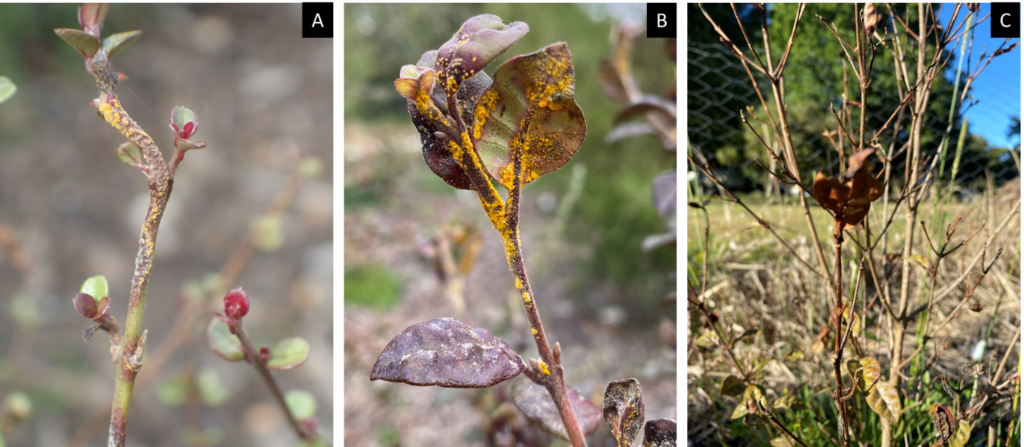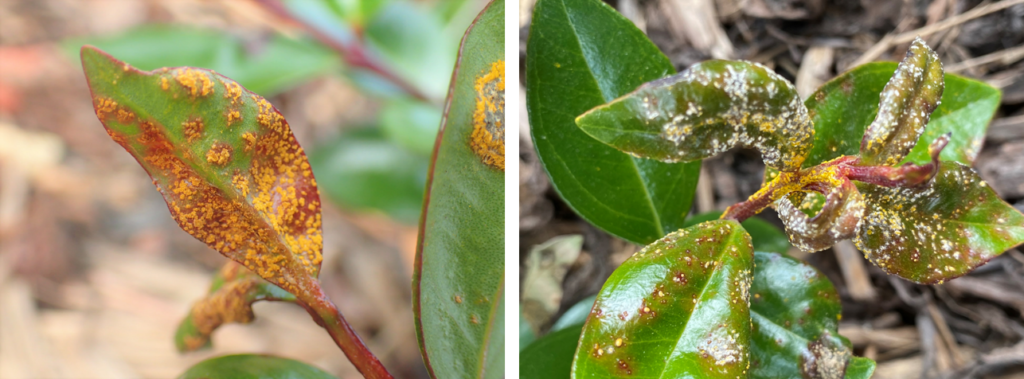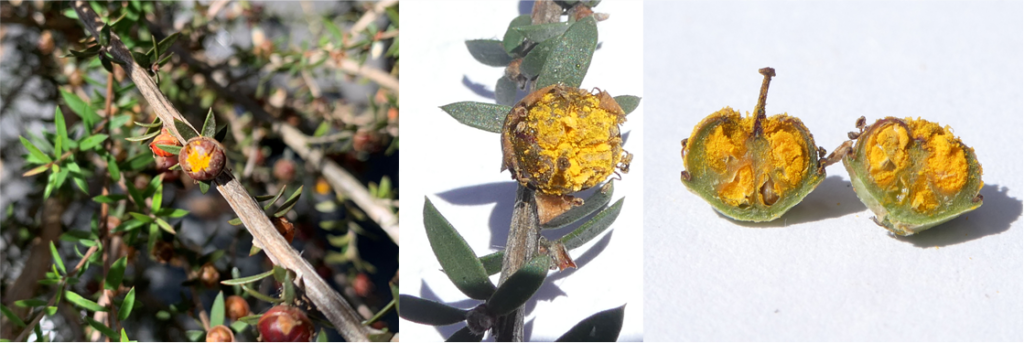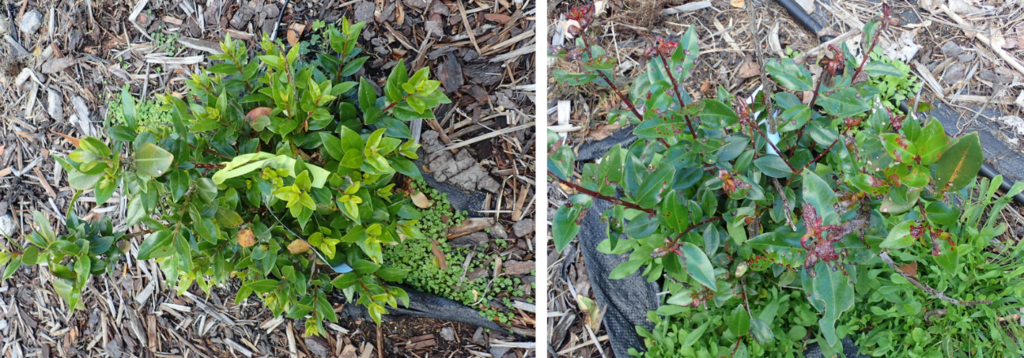Host susceptibility trial
The most important information lacking in our understanding of myrtle rust is how vulnerable our native myrtle species are to infection. Plants have already been tested for their susceptibility to myrtle rust under controlled conditions that favour pathogen infection and disease development, but the question is how well this can predict the impacts of myrtle rust in the field? This research is being co-led by Dr Julia Soewarto (Scion) and Dr Robert Beresford (Plant & Food Research), and builds on data and resources from previous MBIE-Catalyst strategic fund and MPI programs for myrtle rust.
During these prior programs, germplasm of a range of native myrtle was sent overseas to ascertain the susceptibility to infection by different strains of myrtle rust, including the pandemic strain present in New Zealand. Some of the germplasm that stayed in New Zealand was planted in long-term monitoring trials in Auckland (Plant and Food Research Centre – Mt Albert) and Rotorua (Scion) to assess the real-world relevance of the artificial screening. These locations were chosen because active myrtle rust infections in their vicinity allows natural infection of the seedlings to occur, without any human intervention needed. Set up between October and November 2019 under Ngā Rākau Taketake (NRT) BHNSC funding, these trials are unique in New Zealand and enabled scientists to accurately quantify the impacts of myrtle rust over several seasons and under different climatic conditions.
“Our aim is to understand how natural myrtle rust infection can debilitate plant growth or survival, how environmental factors contribute to the myrtle rust development and how natural field infection relate to the artificial resistance screening performed overseas” said Julia. “It is amazing how quickly myrtle rust can infect plants; we noticed the first infection in our trials only two weeks after planting the seedlings.”
The species included in these trials are pōhutukawa (Metrosideros excelsa), mānuka (Leptospermum scoparium), kānuka (Kunzea ericoides), rōhutu (lophomyrtus obcordata) and ramarama (Lophomyrtus bullata), along with the exotic rose apple (Syzygium jambos). A total of 384 juvenile trees were planted following a randomized-block design in each location. Every month, the scientists are assessing the disease severity on each individual plant and linking it to climatic data captured by on-site automated-weather stations.


Data from these trials showed that pōhutukawa, ramarama, rose apple and rōhutu are the species most impacted by myrtle rust in both trials. These results mostly reflect the previous artificial screening, although we have found a few ramarama plants that appear to be resistant. Myrtle rust causes various symptoms ranging from leaf distortion, defoliation and branch dieback to reduced reproductive output. While not spontaneously killing plants, repeated cycles of myrtle rust infection render the host plant very weak and not able to cope with other forms of environmental stress such as drought, frost or invertebrate damage.
Scientists also observed differences in myrtle rust severity between the two trials. For most of the year, Auckland enjoys a ‘warm’ climate with high relative humidity, which benefits plant growth but also exacerbates myrtle rust severity compared with Rotorua. These climate-disease relations have implications as we face a warming climate.
“This year in the Rotorua trial, the winter was pretty mild compared to the previous years. Consequently, we recorded myrtle rust infection on species like pōhutukawa until June, which was quite unusual for this season in that part of New Zealand” says Julia. “With global warming, myrtle rust impacts are going to be more visible even in areas that we thought were initially too cold for the pathogen to prosper all year round.”
In December 2020, myrtle rust infection was reported on mānuka fruits in the Auckland trial. This finding was a first in New Zealand and created nationwide interest because of the ecological and economic importance of this species. Interestingly, myrtle rust has not developed on stems or leaves of mānuka nor kānuka, but continued monitoring is needed to ascertain the threat that myrtle rust represents for these species under different climatic scenarios.

In addition to generating new knowledge and facilitating teaching about myrtle rust, these trials also enabled new science and projects to take place. As part of operational research funded by the Auckland Council, the ability of fungicide sprays to control myrtle rust are currently being assessed in both trials. The results gathered from this study will directly benefit all the stakeholder wishing to control myrtle rust.

Posted July 2021